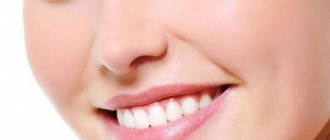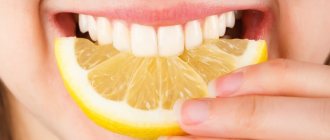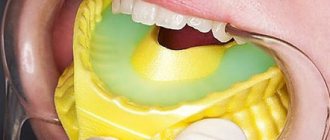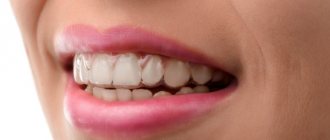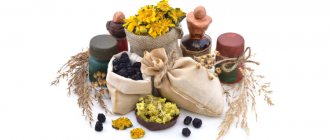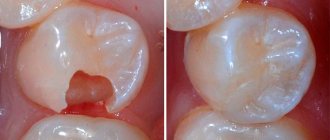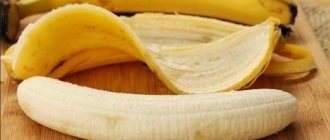Causes of yellowing of tooth enamel
If beige, yellow, brown or dark plaque appears on the surface of your teeth, the first thing you need to pay attention to is your daily diet.
With regular consumption of sweets, black tea, coffee, carbonated drinks, chocolate, beets, turnips and spices, the enamel gradually turns yellow.
Other reasons why plaque appears:
- bad habits (smoking, hookah);
- violation of oral hygiene rules;
- taking antibiotics;
- strict diet;
- unbalanced diet;
- age-related changes in the body;
- naturally yellow teeth;
- wearing braces;
- injuries to tooth enamel;
- blood and kidney diseases.
How to extend the result
White teeth are a temporary phenomenon. After just a year, there is a need to lighten them again. To extend the period of a snow-white smile for as long as possible, you should avoid eating foods and drinks that are colored. No need to drink coffee, eat blueberries, sweets and candies with dyes. After each meal, dentists recommend rinsing your mouth with warm water. Particular attention should be paid to daily hygiene procedures. It is generally better to quit smoking completely.
Oil rinses for whitening
To whiten your teeth at home, you can use coconut oil, which has an antibacterial effect. Lauric acid kills bacteria, viruses and fungi, eliminates redness and pain of the gums.
Coconut oil is also used to prevent gingivitis and stomatitis.
Effective ways to whiten teeth at home:
- Take 1 tbsp into your mouth. spoon of coconut oil, suck and hold in your mouth for 15–20 minutes. Then brush your teeth. Carry out the procedure daily, the result will be noticeable after 2 weeks.
- Apply coconut oil to the brush, rub the enamel, interdental space. Do not rinse for 15-20 minutes, then rinse your mouth thoroughly with water. Repeat the procedure daily for 2-3 weeks.
Coconut oil should not be swallowed. After the procedure is completed, you need to spit it out, and along with it, pathogenic bacteria will be removed, bad breath, and gum inflammation will disappear. The recommended course of enamel whitening is 2–3 weeks.
Is bleaching always acceptable?
It is not always possible to whiten your teeth at home using express methods that work in one day. Abrasives, even natural ones, have a rough effect on tooth enamel. If there are microcracks on it, amateur whitening can result in catastrophic destruction of the enamel layer. And if teeth are damaged by caries or have chipped edges, any careless impact can speed up the process of tissue destruction. Therefore, if a person has not undergone preventive examinations at the dentist for a long time and is not confident in the integrity of his teeth, it is better not to risk using “rough” methods of lightening the enamel.
Infectious and chronic diseases of the gums, lips, tongue and mucous membranes of the oral cavity are also a direct contraindication to any option for teeth whitening, otherwise the inflammation may increase many times over. The list of such diseases includes:
- periodontitis and periodontal disease;
- gingivitis;
- stomatitis;
- herpes;
- measles, ARVI and any other infections manifested by a rash and other focal lesions in the mouth;
- any injuries and microtraumas in the oral cavity.
If you have dentures and fillings on your front teeth, you should not whiten the enamel, since dental materials do not react with the lightening components, which is why the contrast between them and the whitened teeth will be too noticeable to others.
Before using any bleaching product, you should make sure that there is no allergic or individual reaction to its components. To do this, you need to apply the drug to a small area of skin on the inside of the elbow, where the epidermis is most sensitive, and to the mucous membrane of the gums.
Brushing your teeth with baking soda
Baking soda is a mild abrasive that quickly removes surface darkening of enamel. This teeth whitening product is used with extreme caution and is not suitable for daily use.
Small crystals of baking soda thin the tooth enamel, which can no longer be restored after the procedure. The problem may only get worse.
The procedure is performed for no more than 5 minutes and no more than once every 7–10 days. Recipes for quick teeth whitening:
- Add some baking soda to your toothpaste, apply to your toothbrush, and brush your teeth. Rinse your mouth well with water.
- Mix baking soda with hydrogen peroxide in such proportions to obtain a homogeneous mass, which you can use instead of toothpaste.
Gel in universal mouth guards
Universal trays with Opalescence TresWhite Supreme whitening gel. Price 4,500 rubles.
Unlike individual ones, universal mouthguards are disposable. They do not need to be made in the dentist's office. They are made of elastic material that fits any shape of the dentition. The downside is that they are opaque and bulky. Because of this, they are visible to others and can interfere with conversation. These mouthguards are best worn at home or during periods of time when you do not need to communicate with anyone.
For universal aligners, you do not need to buy whitening gel. The manufacturer sells them in protective packaging and pre-fills them with a viscous gel that does not leak. True, the gel concentration is only 10%.
Universal trays with Opalescence TresWhite Supreme whitening gel. Price 4,500 rubles.
- Remove the mouthguard from its protective packaging
- Take the holder and place the mouth guard in the center of the teeth
- Lightly bite or press the mouthguard with your tongue
- Pull the holder and remove the top color layer
- Use your tongue to spread the white inner layer
- Repeat with the second tray
- Throw away the mouthguard after use.
The manufacturer recommends wearing the mouth guard for 30 to 40 minutes a day. But it is better, as in the case of an individual mouthguard, to consult a dentist. You should always remember that each tooth shade needs its own whitening regimen.
Universal mouth guards are sold with gel, but they are not as comfortable.
Home whitening with both types of aligners can be done no more than twenty-eight days a year, twice for two weeks.
Hydrogen peroxide mouth rinse
To make the enamel 2-3 shades lighter in 2-3 weeks, you can use hydrogen peroxide. The pharmacy sells a 3% solution. To eliminate side effects - irritation and gum pain - you need to dilute the concentrate with water in a 1:1 ratio.
To make teeth whitening at home safe, the optimal solution of hydrogen peroxide is 1.5%.
General recommendations from dentists:
- Use hydrogen peroxide before routine cleaning.
- Test for an allergic reaction.
- Do not swallow the solution, otherwise you may damage the mucous membrane and cause a burn.
- If pain or burning occurs in your mouth during the procedure, rinse your mouth with water.
- Use a fresh rinse solution, otherwise the properties of the peroxide will weaken.
- Do not eat for 1 hour after the procedure.
- If you have wounds or ulcers in your mouth, you should not use peroxide.
Available, but not always painless
During a photo-whitening session, the esthetician dentist acts on the whitening gel applied to the patient’s teeth with the light of special lamps - for example, halogen or ultraviolet. This technology allows you to simultaneously influence all teeth in the smile zone from the outside, it is carried out within one to one and a half hours, the cost of photo whitening is low. However, the main disadvantages of this procedure, which aesthetic dentistry warns about, are the likelihood of side effects, such as overheating of the teeth and increased sensitivity. By the way, the last complication can also arise as a result of using any other whitening technique.
Pasta with sea salt
This product whitens enamel and has pronounced bactericidal and antiseptic effects. Table salt is more commonly used, but studies have shown that the whitening properties of sea salt are no weaker. Effective recipes and rules for their use:
- Combine 1 teaspoon of salt with the same amount of lemon juice or apple cider vinegar. Brush your teeth with this mixture. Carry out the procedure no more than once a week, otherwise you can damage the structure of the tooth enamel.
- Mix 1 teaspoon each of baking soda and sea salt. Add enough water until the mixture becomes paste-like. Clean the enamel with a brush, repeat the procedure once a week.
- Dissolve 1 tbsp. spoon of sea salt in 1 glass of water, mix well, rinse your mouth after brushing. Stains on the enamel disappear after 2-3 weeks of regular treatments.
Home treatments
For clarification, use soda, lemon juice, activated carbon, table salt, and sea salt. No special skills or high costs are required. The main rule is not to overdo it. If used carefully, the goal will be achieved in a short time.
Preparation for procedures
Various methods of whitening can thin the enamel, increase its sensitivity to hot and cold foods, and increase the risk of developing caries. It needs to be strengthened before lightening. Natural products will help with this: milk, fermented milk products, cottage cheese, vegetables, fruits. They contain calcium, which has a beneficial effect on the condition of teeth and bones. You can also take calcium tablets. The product is sold in all pharmacies.
Tea tree oil will relieve inflammation of the gums, prevent the formation of caries, periodontal disease, and get rid of bacteria. Add a few drops to a glass of water and rinse your mouth.
After a month of using the above recommendations, you can start teeth whitening.
Activated carbon
Activated carbon is an effective way to restore natural color without harm. Despite the black color of the tablets, small crystals of potassium hydroxide whiten effectively, efficiently, without pain. Methods:
- The tablets are ground into powder, a little water is added, and stirred to a pasty consistency. Apply the substance to the brush and brush your teeth. Use regularly.
- Activated carbon is periodically added to the paste on the brush.
- A few drops of lemon juice are dripped into activated carbon powder, applied to the enamel, held for a while, then rinsed out.
Such products are used for two to three weeks. In addition to the whitening effect, it gets rid of bacteria that live and multiply in hard-to-reach places in the oral cavity.
Peroxide and baking soda
Restoring color with peroxide is an effective method that effectively removes plaque. Peroxide is used alone or with other components. For safety reasons, peroxide is used infrequently. The composition is kept for up to four minutes. But if the sensitivity of the enamel is too high, peroxide should be abandoned.
Recipes with peroxide:
- A three percent solution is applied to the teeth using a cotton pad and washed off after 4 minutes.
- The mouth is rinsed with the mixture: a spoonful of peroxide is added to a glass of water.
Peroxide should not be used for longer than two weeks. There is a risk of damaging the enamel, since the solution is quite aggressive.
Mix soda with toothpaste and brush your teeth this way for three minutes once a week. Baking soda will polish the surface and remove dirt, but can damage your gums.
Lemon
Lemon juice will remove stones, get rid of plaque, destroy bacteria, strengthen gums, and give freshness to your breath. Has an anti-putrefactive, antiseptic effect. Contains citric acid, alkali, vitamins, minerals, pectins. Due to high acidity, it should not be used too often.
Lightening methods:
- Before and after use, you should not eat foods or drinks with dyes.
- Before applying, use a paste.
- Lemon juice should be used no more than once a week.
- Lemon zest is also effective, but softer due to its lower acid content.
- During manipulation, the mouth is kept open to ensure air circulation.
- Cannot be combined with antibiotics, calcium supplements, antiallergic drugs, tranquilizers.
Important: excessive use of lemon juice contributes to the destruction of calcium in the enamel and increases sensitivity.
Contraindications:
- Childhood.
- Pregnancy, lactation.
- Allergy to lemon.
- After wearing braces for a long time.
- If there are chips.
- Injuries, gum inflammation.
- Caries, periodontal disease, periodontitis.
- After the extension procedure.
- If you have crowns, dentures, fillings.
Whitening methods:
- Rub your teeth with pieces of lemon zest.
- Chew the skin of the fruit.
- Dilute the juice of half a lemon in a glass of warm water and rinse your mouth.
- Brush your teeth with a mixture of paste, activated carbon, and a few drops of juice (2 times a week).
- Apply the paste to the brush, add a pinch of salt, 10 citric acid crystals, brush your teeth, rinse your mouth with warm water.
Salt
It is better to take sea salt rather than table salt. It contains more useful substances. It can prevent the development of caries, eliminate yellow plaque, destroy bacteria, make teeth stronger, lighten them, and relieve pain.
Salt is mixed with the paste, cleaned, massaging gently, otherwise the salt crystals will cause harm. For gum inflammation, use a saline solution. Dissolve 5 g of the substance in a glass and rinse your mouth twice a day.
Tea tree oil
It is a natural antiseptic that provides brightening and eliminates germs. Recipes:
- Soak a piece of gauze or a cotton pad in the oil and wipe each tooth thoroughly. Then rinse your mouth with lemon juice.
- Every morning after hygiene, apply oil with a brush and clean the surface with light movements.
- Every day you can rinse the cavity with a solution of oil. A few drops are added to a glass of water.
To enhance the effect, the oil is mixed with aloe juice. The solution will disinfect, remove flux, eliminate suppuration, and strengthen the gums.
Other means
- Coconut oil can whiten teeth if you have high sensitivity. It removes germs and freshens breath. Lauric acid helps prevent oral diseases and caries. Keep a little oil in your mouth, spit it out, and rinse your mouth with water. The oil is also mixed with baking soda, and the teeth are brushed with the mixture.
- Banana peel. Contains many useful substances. The method is safe and harmless. Rub the surface with the inside of the peel for 3 minutes.
- Aloe vera. It is recommended to add to the paste with each use. The product cleanses, slightly whitens, heals wounds, and eliminates germs.
- Apple vinegar. Eliminates plaque, whitens. Add to water and rinse your mouth twice a day. Mix vinegar with a pinch of baking soda and brush your teeth with the mixture.
- Strawberries are crushed. Distribute over the surface of the teeth. Massage and wash off after 10 minutes. Take twice a week. The fruit acid of the berry is not as aggressive as citric acid.
Cleansing with activated carbon powder
Activated carbon contains potassium hydroxide, which has whitening properties and, when used correctly, lightens the enamel by 2-3 tones. If you use the product 2-3 times a week, you will be able to observe a whitening effect no weaker than after a visit to the dental office. Popular recipes and rules for their use:
- Grind the activated carbon tablet to a powder. Dilute with water to obtain a homogeneous paste. Soak a brush in it and brush your teeth and interdental spaces, making vertical movements. You can combine the powder with regular toothpaste.
- Mix crushed activated carbon powder with lemon juice to form a paste. Clean enamel with this composition once a week. After this, rinse your mouth well with water (lemon juice is an aggressive substance).
Folk remedies for teeth whitening
Many people prefer to use folk remedies for teeth whitening. The advantages of this choice are:
- accessibility, no need to buy expensive drugs, many recipes use ingredients that are in every kitchen;
- natural, there are no fragrances or preservatives in home remedies;
- ease of use.
It must be remembered that folk recipes also have contraindications, which are given for pharmaceutical drugs. You should not expect an instant effect from them; regularity is needed to achieve results.
Hydrogen peroxide
Teeth whitening with hydrogen peroxide should be done with great care. This product is certainly effective, but it is also quite aggressive, so it can negatively affect the condition of the enamel.
The easiest way to use peroxide is to prepare a solution. You need to mix 3% peroxide with an equal amount of water and rinse the growth thoroughly. Then rinse your mouth with water. After the procedure, you should not eat or drink for half an hour.
An even more effective remedy is prepared using soda. Mix these two components and use the resulting “paste” to brush your teeth as usual.
Activated carbon
Activated carbon is a safe and quite effective remedy. To prepare the cleaning composition, you need to take 2-3 tablets and grind them very thoroughly to form a powder.
Then add a little water to the resulting powder to form a thick paste. The prepared mass is placed on a brush and the teeth are cleaned. Then leave the composition on the teeth for 2 minutes. After this, you can rinse your mouth.
Baking soda
Whitening with soda is very popular. You can use baking soda like tooth powder, that is, dip a brush soaked in water into it. But a more pleasant procedure would be brushing your teeth with strawberries and soda.
To do this, you need to puree 2-3 berries and mix this puree with soda. Use the prepared mixture to brush your teeth. After brushing, it is recommended to additionally brush your teeth using a toothpaste containing fluoride.
Tea tree oil
Tea tree oil is an excellent antiseptic; it destroys bacteria and fungi. This product is very easy to use. Add 1 drop of oil to the paste (one serving) and stir. Brush your teeth with this mixture as usual.
Salt
You can whiten your teeth with salt. Ideally, you should use the finest sea salt, but you can also use regular table salt. If there is a large amount of plaque, you need to act like this:
- apply the paste to a soft brush as usual;
- then fine salt is thickly sprinkled onto the paste;
- Use the resulting mixture to brush your teeth.
If your teeth are hypersensitive, you should not brush them with salt. You can prepare a solution by stirring a spoonful of salt in a glass of warm water and use the solution for rinsing.
Dentifrice
Teeth whitening is easy and simple with tooth powder. Recommended:
- use only a soft toothbrush, since the powder itself already has a mechanical effect, so using a hard brush will be unnecessary;
- It is recommended to use the powder for 10-12 days. If you use it constantly, the enamel may become thinner;
- After completing the course, you should purchase a paste with a mineral complex to quickly restore the enamel.
Apple Cider Vinegar Rinse
This natural product contains acetic acid, which is a proven antiseptic and bactericidal agent. Using apple cider vinegar, you can destroy bacteria in the oral cavity, get rid of unpleasant odor, and whiten your teeth by 2-4 shades.
The product is aggressive; if used regularly, it can damage the enamel structure and cause caries.
To achieve a snow-white smile, you can use the following recipes:
- Dilute vinegar with water in a ratio of 1:10, add 1 teaspoon of table salt. Stir, dissolve the crystals, rinse your mouth with a solution at room temperature after brushing. Perform the procedure 1 time/week for a course of 1 month.
- Add 1 teaspoon of apple cider vinegar to 1 glass of cool water and stir. Rinse your mouth before brushing your teeth every day for 7-10 days.
The safest in-office procedures
Among the safest methods:
- laser;
- photobleaching;
- chemical.
Let's consider their features.
Laser
Used strictly in a dental clinic. The doctor applies a chemical composition containing hydrogen peroxide to the previously prepared dental surface. Then he activates it with laser beams. Each unit is processed in turn. The technique is in high demand, as it makes it possible to whiten a smile by 3-10 shades. Since the laser beam has a targeted effect, the risk of chemical and thermal burns is minimal.
Photobleaching
Involves the use of ZOOM and Amazing White techniques. In the first case, the doctor uses a solution with a peroxide concentration of 30 to 35%. After applying it, a special lamp is directed to the teeth. It is not always possible to achieve the desired result in one session. Then the therapy is repeated two or three times. It is important that there are sufficient time intervals between them (these are determined by the dentist). ZOOM is suitable for people who want to make their smile 8-10 shades whiter. Its peculiarity is that the gel used contains not only hydrogen peroxide, but also calcium phosphate. It is needed for parallel strengthening. Amazing White is a new effective development belonging to the photo whitening category. Involves the use of an LED lamp, the rays of which are directed onto units coated with a brightening agent. Suitable for lightening 7-10 tones in two or three procedures. Provides long-term results. Due to the low concentration of peroxide (usually about 16%), it is practically not harmful and does not lead to increased sensitivity.
Chemical
This practice involves the use of an oxidizing gel, but does not require the use of special lamps. With its help, it is possible to lighten by 5-7 tones. The method is not as effective as the above, but it is safer.
Turmeric for white teeth
Spices also whiten teeth. Turmeric, as a natural antibiotic, destroys bacteria that cause gum inflammation and pain. It contains selenium, ascorbic acid, magnesium and calcium to strengthen and brighten teeth.
Turmeric relieves gum inflammation.
Effective means and rules for their use:
- Mix turmeric with water to form a paste. Brush your teeth, do not rinse for 3-5 minutes, then rinse your mouth well and brush the enamel with regular toothpaste. Carry out the procedure 2-3 times/week.
- Add 1 teaspoon of turmeric to 0.5 teaspoon of coconut oil. Mix and brush your teeth with the mixture. After 3-5 minutes, rinse your mouth. Do not eat food for 40–60 minutes. Repeat the procedure 1-2 times/week.
Disadvantages of home methods
With whitening procedures performed independently and without observing the correct dosage, problems with the gums may occur. Acid and peroxide irritate soft tissues. When cleaning with soda and charcoal, the mucous membrane is injured if you rub very hard. When brushing, the brush should not touch the gums. Chamomile tincture after the procedure will help relieve inflammation.
Important: Almost any whitening method, especially those used without consulting a specialist, thins the enamel and leads to tooth sensitivity!
The risk of caries increases. Before manipulations, you should consult a dentist, and also strengthen them with calcium preparations.
Contraindications: pregnancy, lactation, allergies to components of whitening compositions, caries, periodontal disease, anomalies in the eruption of wisdom teeth.
Whitening with lemon or orange peel
Citrus fruits and essential oils based on them are used to whiten teeth. They contain organic acids that can whiten teeth by 3-4 shades in 1 month. These are aggressive substances that are best not used in concentrated form.
Otherwise, you can damage the enamel, cause irritation and burn the gum mucosa.
Effective recipes with lemon and orange zest, rules for preparing them at home:
- Grind the orange zest and bay leaf. Dilute the homogeneous paste with toothpaste. Use the composition to brush your teeth 1 time/week for a course of 1 month. After brushing, rinse your mouth with water.
- Use lemon pulp for applications on darkened teeth. Carry out the procedure for no more than 5 minutes, rinse your mouth well with water. If you make applications once a week, after 3-4 weeks the enamel will lighten by 2-3 tones.
Is it possible to whiten teeth at home?
There are two types of teeth whitening: professional in the dentist's office and at home. The latter is less harmful to tooth enamel.
At home, the chemicals used are not as strong as in dentists' offices. The effective home whitening procedure lasts 5-10 days.
At home, teeth can be whitened using folk remedies, including products available in almost any home.
